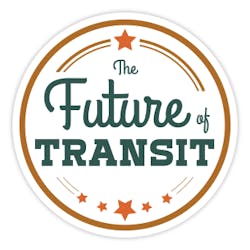At the June 24 board of directors meeting, TriMet discussed its future shared visions for expanding service as the region is expected to grow by the equivalent of four new Hillsboros over the next 20 years. The Portland region is also among the fastest growing areas in the nation. Metro’s Urban Growth Report estimates that the growth will add 400,000 new residents and 260,000 new jobs by 2035.
Planning the future of transit
For nearly four years, TriMet has been meeting with key stakeholders, businesses, residents and riders to help create Service Enhancement Plans (SEPs), which are comprehensive strategic plans to identify and prioritize how best to expand transit in each community to respond to the
TriMet’s shared visions for the future of transit in our growing region
population growth. The SEPs have been developed for the Westside,Southwest, Eastside, North/Central andSoutheast sectors.
TriMet General Manager Neil McFarlane said that to start delivering on the future service plans, the agency also had to reduce costs and become more efficient. “The new labor contract put us on a financially sustainable path. And along with other cost-cutting measures, our financial house is in order and we’re making the most efficient use of our revenues.”
He added that TriMet’s operating cost per rider is 22 percent below average of our peer agencies. We also rank near the top in ridership per capita, rides per hour and fare recovery.
McFarlane noted that the agency has restored service to pre-recession levels, continued investing in our bus fleet and rail infrastructure, and positioning us to incrementally grow service.
“But in order to stay ahead of the large influx of residents and jobs, we must invest more in both roads and transit,” said McFarlane. “We have a choice to help keep our region moving and economy growing, and not let congestion drive what happens in our communities,” said McFarlane.
The 2014 Portland Business Alliance Cost of Congestion study shows that the growth in jobs and residents mean more travel, more freight, more demands on the existing transportation system and more congestion. It found that investing in transit and roads would reduce that impact by almost half, while generating nearly $1.1 billion in economic benefits and more than 8,300 more jobs per year by 2040. That means for every $1 spent on roads and transit, there’s a return of $2.40.
Vision for new service
Transit is part of the solution allowing freight and cars to move more freely on our roads.
As the region is changing and jobs spread around the region, transit is also changing. Here’s a sampling of ideas for expanding service in each of the SEP sectors:
- More frequent bus service, including new Frequent Service lines on 122nd Ave, 181st/182nd Aves in Rockwood, and between Beaverton, Orenco and Hillsboro
- Bus Rapid Transit on Powell/Division between downtown Portland/SE Portland and Gresham/Mt. Hood Community College
- Extending MAX Red Line service from Beaverton to Hillsboro, providing direct service to PDX
- New bus lines and more connections to more places, such as new lines on NE/SE 148th, 162nd, Sherwood and Tualatin, between Gresham and Troutdale Reynolds Industrial Park, connecting SE Portland to the Columbia Corridor.
- Community and job connectors in suburban areas, such as Rivergate, East Columbia Corridor, Clackamas Industrial area and Cedar Mill/Northwest Heights areas.
Paying for more and better service
In order to implement the vision for more service and stay ahead of the growth and ease congestion, TriMet needs additional funding. We’ve talked with the community to determine if now is a good time to increase the employer payroll tax, which funds about 54 percent of transit service.
In 2009 the Oregon Legislature gave TriMet the authority to increase the employer payroll tax rate, currently at 0.7237 percent, by 1/10th of 1 percent phased in over 10 years.
McFarlane noted that the agency did not take action to increase the employer tax rate due to the Great Recession, and the need for the agency to realign our cost structure of benefits and wages to be more efficient with our revenues. Find out more about the proposal, which would be dedicated to new service.
“Now that we’re on solid financial footing, we are focused on improving service to connect more people to more jobs while easing congestion,” said McFarlane.
Examples of the incremental increase in the rate over 10 years:
- A small company with $200,000 annual gross payroll would see a $20 increase each year; after 10 years, it would mean a $200 annual increase.
- A company with $1 million in gross payroll would see a $100 annual increase, topping out at $1,000 more per year in 10 years
- A company with $100 million in payroll would see a $10,000 annual increase, topping out at $100,000 more per year after full implementation at 10 years.
At the July 22 board meeting, an independent financial analysis will be presented. Before the board considers the payroll tax increase, the financial analysis has to determine that implementation would not negatively impact the economy. A first reading of the proposal is set for Aug. 12 and a vote on Sept. 23. If approved, it would take effect on January 1, 2016.



